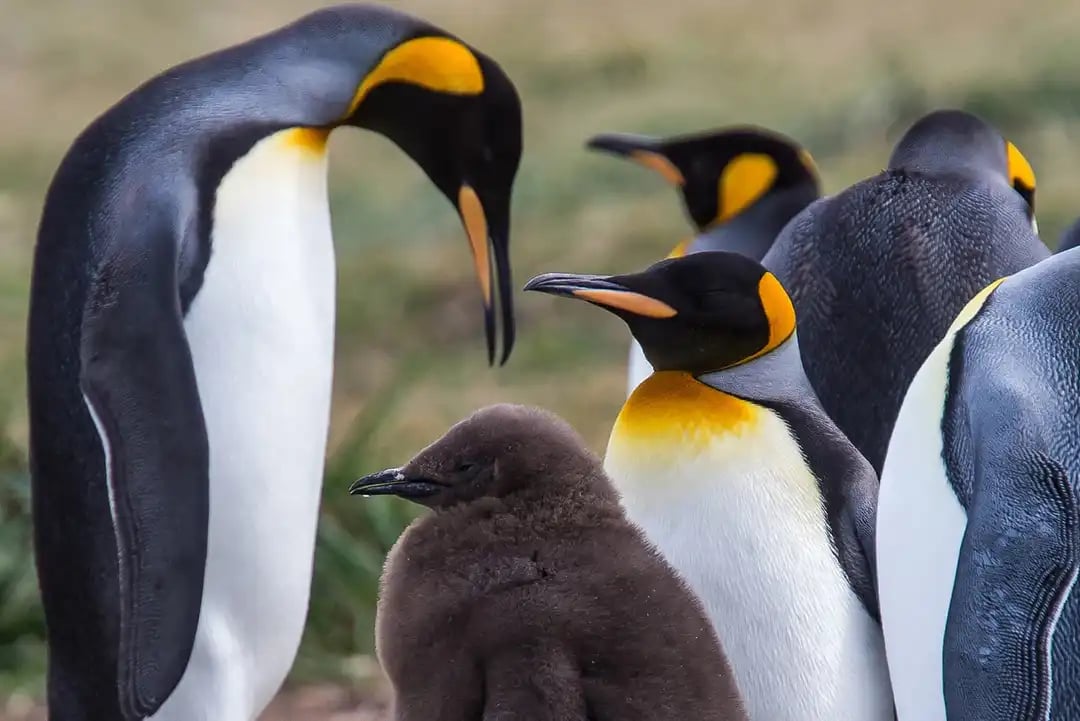Have you ever done a Safari?
If you haven’t, I bet pictures of lions and elephants come to your mind just by listening to the word “Safari”. And if you have, I bet you didn’t know you could do a wildlife safari in Patagonia, the southern tip of the American continent.
Patagonia is far more than heaven on Earth for hikers. In these rugged, remote landscapes, you will find some amazing animal species. Whether you travel to the plains of Torres del Paine National Park in Chile’s Magallanes region or to Ushuaia on the Argentine side of Tierra del Fuego Island, you will spot some of the most beautiful animals you can think of.
But Patagonia is huge. This wild territory split between Chile and Argentina has 1,043 million square kilometers for you to explore. Here, you will find around 500 bird species and plenty of fantastic mammals, including the elusive puma, the endangered south Andean deer and the energetic guanaco. You can also sail to the remote fjords of Patagonia to look for humpback whales, penguins and orcas. Did you say “epic”?

Here’s a little guide to help you choose the wildlife experience in Patagonia that will exceed your expectations.
1. Wildlife Safari in Patagonia
Where does it take place? Torres del Paine National Park, Chile
What kind of experience is it? Easy Walking, Hiking, Nature Observation

A wildlife safari in Torres del Paine National Park is an adventure that always exceeds the travelers’ expectations. This experience of min. 4 days (a 6-day stay is highly recommended) is the best way to discover the most stunning landscapes of Patagonia’s finest national park with the most flexibility.
You spend your nights in a cool (and cozy!) dome at EcoCamp Patagonia (picture below), the first geodesic dome hotel in the world that is located at the feet of the granite towers that gave the national park its name. You wake up every morning with the melody of the singing birds and a daily epic sunrise on the surrounding mountains. And during the day, you explore the national park with an experienced guide and fellow travelers you can socialize with.

The great thing about the Wildlife Safari is the possibility to choose between three different excursions a day, from an easy walk to an epic trek. There is a lot of wildlife involved, as every easy excursion focuses on nature observation in a specific area of the park. One day, you can aim to Laguna Azul - the “Blue lagoon” - in the eastern side of the park and look for condors, armadillos, guanacos and pumas. Another day, you can walk through the nothofagus forest near the Southern Patagonia ice fields and look for the Magellanic woodpecker and the south Andean deer.
You can also see the highlights of the park, namely French Valley, Grey Glacier and the Towers’ Base Viewpoints (the most beautiful spots of the famous W Trek). The Wildlife Safari is the best mix between a relaxing vacation and a challenging hiking adventure. You can even mix it with a puma encounter experience if you want to spot Patagonia’s celebrated cat.
The good news? It starts any day of the week and you can choose the excursions while at Ecocamp (you don’t have to pre-book them).
2. Humpback Whale Watching
Where does it take place? Francisco Coloane Marine Park, Magellan Strait, Chile
What kind of experience is it? Sailing, Nature Observation

Ferdinand de Magellan, a Portuguese explorer, discovered the Magellan strait in 1520. This Spanish expedition was the first European expedition to reach the remote islands of Patagonia. Today, you can still feel like an explorer while sailing through the channels of southern Patagonia. This full day you’ll never forget starts at early morning (4am) but the epicness of the experience is worth the early wake up!
You will sail through the Magellan strait on a small boat and pass through some legendary spots (also discovered by Ferdinand de Magellan), including Cape Froward, the southernmost point of mainland South America. Past this point, there is no human settlement : only you and the pristine wilderness of the “world’s end”. Be careful though : the area is windy and these turbulent waters can have you seasick in a few minutes.

The boat will aim to the southern channels of the Magellan strait, around the Francisco Coloane Marine Park, the first marine park in Chile. The area is full of marine life, so you may encounter some albatross, penguins and sea lions on the way. But the absolute star here is the humpback whale, one of the largest rorqual species whose length ranges from 12 to 16 meters.
Humpback whales migrate up to 25,000 kilometers (16,000 miles) every year and feed in the cold waters of Patagonia. Here, you can see them from October to March.
The good news? Your chances of spotting whales are high on this excursion, which is a great extension on a trip to Torres del Paine / EcoCamp Patagonia. It is organized with small groups, so you’ll have plenty of space to enjoy wildlife (and the sounds of nature).
3. Tierra del Fuego & Ushuaia Explorer
Where does it take place? Tierra del Fuego, Argentina
What kind of experience is it? Sailing, Hiking, Nature Observation

Tierra del Fuego (Spanish for “Land of Fire”) is a huge archipelago (an area of 48,100km2) that is off the southernmost tip of the South American mainland. It is divided between Chile and Argentina and the capital is Ushuaia, known as “the southernmost city on Earth” (it is actually the second one after Puerto Williams in Chile). This beautiful city is surrounded by snow-capped mountains, in a wide bay on the southern coast of the island.
On this 4-day exploration, you will travel to Gable Island on a canoe (a cool way to feel like the Onas, the indigenous tribes that Ferdinand de Magellan met on his expedition in 1520) and paddle through a wild river that leads to the sea. You will take a motorboat to Martillo island, where you’ll see the breeding Magellanic penguins. You will also sail through the Beagle channel and look for marine life, including sea lions and Magellan cormorants.
This great trip is also a fantastic way to discover the local flora, with a walk through the forests of Tierra del Fuego National Park.
The good news? This experience is active but accessible. Hikes are relatively easy but rewarding, and you’ll get a great overview of the local marine fauna, in one of the best spots in Patagonia to see Magellanic Penguins.
4. King Penguin Viewing Excursion
Where does it take place? Tierra del Fuego, Chile
What kind of experience is it? Sailing, Nature Observation

King Penguins are the world’s second largest species of penguins (they measure up to 100 centimeters), smaller but similar to the emperor penguins that inhabit Antarctica. Outside Antarctica, they breed in very few places but you’ll find them in a very specific part of Tierra del Fuego, called “Bahía Inutil”. The “Useless Bay” (the literal translation in English) is a bay in the Western side of Tierra del Fuego you can reach on a full day from Punta Arenas.
The trip begins with a ferry ride across the Magellan strait to the Chilota bay of Tierra del Fuego. Then you will drive for about an hour and a half to Bahía Inutil to reach the King Penguin Park.
Don’t forget your camera (or/and binoculars) to fully enjoy the vibrant orange across the head of the penguins, beak and chest.
The good news? It’s a cool full day you can do from Punta Arenas and add to your trip to EcoCamp. It’s a long day, but a beautiful overview of the Chilean side of Tierra del Fuego, with the visit of the British Pioneers cemetery and a local museum in Porvenir to discover the history of the archipelago. A nice bonus! Also, it is one of the most accessible excursions (on the planet!) to observe King Penguins.
5. Patagonia Puma Tracking
Where does it take place? Torres del Paine National Park, Chile
What kind of experience is it? Nature Observation, Easy Walking

The puma - also known as “mountain lion” - is the most widespread of any large terrestrial mammal in the Western Hemisphere. It lives from Alaska to Patagonia, but the largest pumas have been reported in Patagonia. In Chile’s Patagonia, Pumas are protected and with such a low density of population, they are not threatened by the urbanization of their natural habitat.
Torres del Paine National Park is a sanctuary for pumas. It is without a doubt the best place on Earth to observe pumas, as they can be seen from the trails and roads of the park, especially in low season (from April to October) though they can be spotted all year round.
They usually live in open areas (plains/grasslands), as they have plenty of food thanks to the guanacos and hares that inhabit southern Patagonia (they also occasionally eat other animals, like the Darwin’s Rhea).
A Puma Tracking experience in Torres del Paine (a 6-day program) will allow you to get close enough to this beautiful cat to get the best pictures you could dream of. You will wander through the trails and roads of the park with a professional guide that is also a wildlife photographer. Puma trackers are around to look for pumas and help you find them.
And while this program is called “Puma Tracking”, it is not only about pumas. The experienced guide will make you see all the other fascinating animals in the area, and make some epic landscape photography in the best viewpoints of the park.
The good news? It is the best way to see pumas and a perfect choice for wildlife photographers. Walks are usually short and easy, though patience is required to spot and photograph the animals. This program is organized in very small groups, so you can take all the time you need to capture pumas (with the camera only).

Not convinced yet? Check out all our experiences or contact us to organize your own tailor-made wildlife trip to Patagonia!















